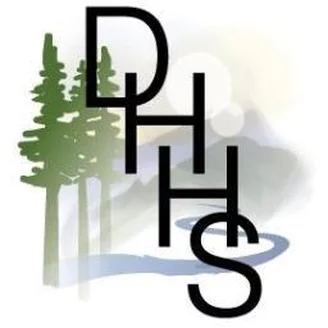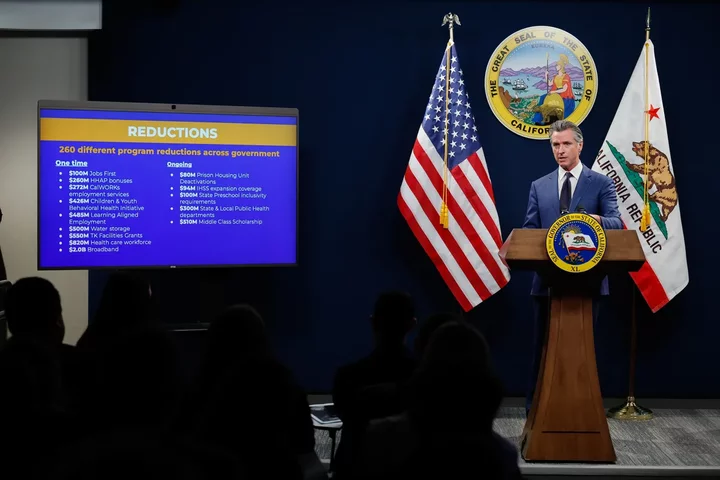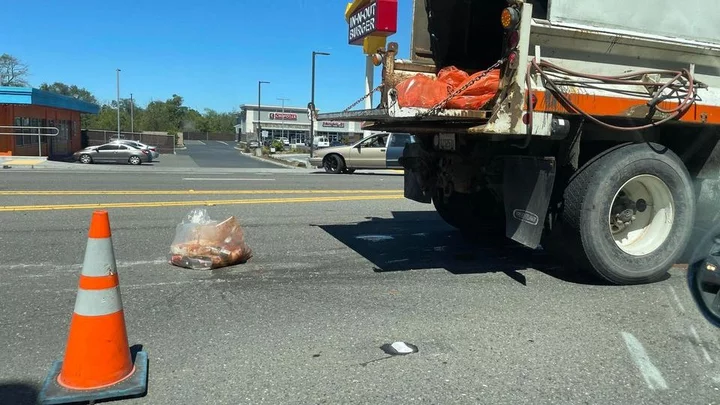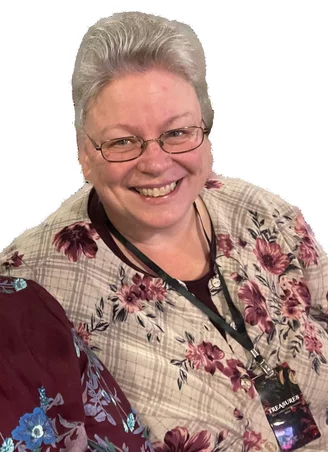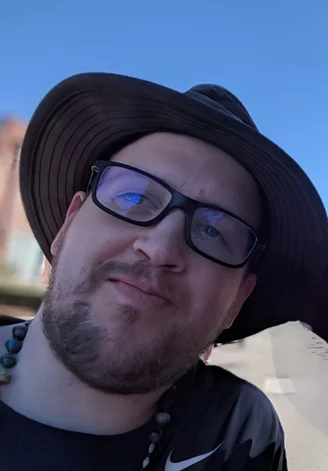ALERT: Potential Measles Exposure in Two Eureka Locations
LoCO Staff / Friday, May 10, 2024 @ 4:53 p.m. / Health
Humboldt County Department of Health and Human Services:
Individuals who visited the Days Inn in Eureka or the Providence St. Joseph Hospital Emergency Department during the following days may have been exposed to measles:
- The Days Inn by Wyndham, 270 Fifth St. in Eureka from Thursday, May 9, at 2 p.m. through Friday, May 10, at 3 a.m.
- Providence St. Joseph Hospital Emergency Department, 2700 Dolbeer St. in Eureka Friday, May 10, between 2:30 a.m. and 6:30 a.m.
Anyone who was inside these locations during these times should contact the Public Health Branch of the Humboldt County Department of Health & Human Services at 707-268-2182, whether or not you are experiencing symptoms. Phones will be answered this evening until 8 p.m. and Saturday from 8 a.m. to 8 p.m.
A Public Health nurse will evaluate your possible exposure and provide information. For unvaccinated individuals, vaccination within 72 hours of exposure can greatly reduce the risk of serious illness.
Earlier today, Public Health was notified that a family traveling through the area included an individual who was seen at St. Joseph Hospital’s Emergency Department with a confirmed case of measles.
According to the California Department of Public Health, measles is a highly contagious virus that lives in the nose and throat mucus of an infected person. It can spread to others through coughing and sneezing. The virus can live for up to one hour in an airspace after the infected person leaves the area, and other people who breathe the contaminated air or touch the infected surface, then touch their eyes, noses or mouths can become infected.It can take anywhere from 7 to 21 days to develop symptoms after exposure to measles, and symptoms usually begin with a fever that lasts for a couple of days, followed by a cough, runny nose, conjunctivitis (pink eye) and a rash. The rash typically appears first on the face, along the hairline and behind the ears and then affects the rest of the body. Infected people are usually contagious from about four days before their rash starts to four days afterward. Children under 5 years old and people who are pregnant or have compromised immune systems are at highest risk for severe disease and complications from measles.
Measles is a vaccine-preventable illness. The measles, mumps and rubella (MMR) vaccine is 97% effective at preventing illness. For more information about the vaccine, contact your primary care provider and visit https://www.cdc.gov/measles/vaccination.html.
Most children and young adults’ digital vaccination records are available through the California Department of Public Health’s Digital Vaccine Record: https://myvaccinerecord.cdph.ca.gov/.
BOOKED
Today: 4 felonies, 13 misdemeanors, 0 infractions
JUDGED
Humboldt County Superior Court Calendar: Yesterday
CHP REPORTS
No current incidents
ELSEWHERE
RHBB: Brass, Banners, and a Bit of Chaos: Hundreds Rally at Eureka Courthouse Today
RHBB: [UPDATE 2:53 p.m.] Medical Emergency on Northbound Highway 101 Near Fields Landing
Times-Standard : Humboldt County health insurance rates jump $182 per month
Times-Standard : Civic calendar | Eureka brings back transgender sanctuary resolution
Gov. Newsom’s Revised Budget, by the Numbers
Alexei Koseff / Friday, May 10, 2024 @ 3:02 p.m. / Sacramento
Gov. Gavin Newsom outlines proposed spending cuts during a press conference unveiling his revised 2024-25 budget proposal at the Capitol Annex Swing Space in Sacramento on May 10, 2024. Photo by Fred Greaves, CalMatters.
Faced with ongoing weaknesses in state finances, Gov. Gavin Newsom put forward a revised budget plan today that he said aims to stabilize California in the longer term by addressing a “sizable deficit” estimated at $56 billion over the next two fiscal years.
Looking beyond the typical annual budget cycle, Newsom proposed more than $30 billion in ongoing and one-time spending cuts, including to education and climate objectives that have been among the governor’s own priorities, though he promised that “core programs” providing social services to needy Californians would be mostly untouched.
“These are propositions that I’ve long advanced, many of them. These are things that I’ve supported,” Newsom said during a press conference in Sacramento. “But you’ve got to do it. We have to be responsible. We have to be accountable. We have to balance the budget.”
The governor’s proposal is an opening offer to the Legislature, which faces a June 15 deadline to pass a balanced budget or forgo its pay. That leaves a little more than a month for members to sort through Newsom’s solutions and negotiate a compromise that reflects their own concerns amid what is certain to be a fever pitch of lobbying from outside groups hoping to stave off cuts to their preferred programs.
The immediate reaction from Democratic leaders in the Assembly and Senate, who will negotiate a deal with the governor, was cautious and addressed few specifics.
“We are encouraged that the Governor’s May Revision improves budget prospects for future years and saves rainy-day reserves,” Assembly Speaker Robert Rivas of Salinas and Budget Committee chairperson Jesse Gabriel of Encino, said in a joint statement, but they added they “will continue to fight to protect core programs for California’s most vulnerable residents and essential classroom funding.”
Senate President Pro Tem Mike McGuire of Healdsburg and Budget Committee chairperson Scott Wiener of San Francisco, in a joint statement, said their past budgets “have uplifted communities and Californians — this year will be no different.”
Here are some key numbers from Newsom’s revised budget for the 2024-25 fiscal year, which begins July 1:
-7.3%
With tax revenues coming in below expectations — about $7 billion lower than even the governor’s January projections — this revised budget proposal is substantially smaller than the $310.8 billion spending plan for the current fiscal year. Including the general fund, special funds and bonds, Newsom is proposing to spend $288.1 billion on state programs next year, down about 7.3%.
$27.6 billion
This is the remaining deficit that the Newsom administration projects for the upcoming fiscal year. Officials have known since last fall that the fiscal picture was bad, but estimates of just how deep the hole would be varied widely — from a more optimistic $38 billion by Newsom’s Department of Finance in January to a dire $73 billion by the nonpartisan Legislative Analyst’s Office.
That prompted Newsom and the Legislature to take “early action” last month to reduce the deficit by more than $17 billion ahead of the regular budget process. Their plan included some program cuts, but mostly relied on new revenue, internal borrowing and funding delays and shifts for savings, earning criticism from Republican lawmakers for being “gimmicky” and “balanced on hopes and prayers.”
In addition to closing the remaining $27.6 billion shortfall for 2024-25, Newsom wants to get a jump start on addressing another projected $28.4 billion deficit in 2025-26.
Why does California have such a financial problem? The reasons go back two years. A downturn in the stock market in 2022 hit capital gains, while high inflation pinched the housing market and the tech industry pulled back on initial public offerings as investments dropped. Those blows have continued as wealthy taxpayers carried forward their losses.
But the drops in revenue were not fully reflected in the spending plan that Newsom and legislators adopted last summer. Severe winter storms prompted the federal government to delay the income tax filing deadline for most Californians from April until November, and the state followed suit, giving an incomplete picture during the budget process. The state committed to funding programs that it subsequently realized it cannot afford.
$21.5 billion
The governor’s budget proposal relies on dipping into state reserve accounts, including $12.2 billion from the rainy-day fund and $900 million from a safety net reserve, spread out over two years. Separately, Newsom wants to use $8.4 billion from a schools reserve account next year to stabilize funding for K-12 education that would otherwise drop.
Newsom also announced that he will ask the Legislature to create another new budget reserve account to help balance California’s volatile revenue picture from year-to-year. Under this plan, the state would set aside projected revenue above historical trends and hold off on spending it until it actually materializes. Newsom said this is easier than amending the existing rainy-day fund to capture more money, which would require approval from the voters.
$19.1 billion
A large part of how Newsom wants to solve California’s deficit involves clawing back $19.1 billion in unspent funding that was promised just a few years ago, during brighter days when the state had a record surplus. Substantial cuts to one-time spending include $2 billion for expanding broadband internet, $820 million for health care workforce development, more than $700 million for housing development, $550 million for early education facilities, $500 million for water storage, $450 million for behavioral health infrastructure and $136 million for cleaning up toxic substances in vulnerable communities.
$13.7 billion
Even more painful may be $13.7 billion in proposed cuts to ongoing programs, including shrinking the Middle Class Scholarship program for college students by $510 million annually and eliminating $300 million for state and local public health programs. Newsom wants to take an additional 4,600 prison beds out of commission, which could save nearly $81 million per year.
The governor proposed an overall reduction of nearly 8% to state operations, which he estimated would save $2.2 billion in 2024-25 and more in the years ahead, though exactly how government agencies would absorb those cuts is still to be determined. Newsom is pushing to eliminate 10,000 vacant state government positions on top of that, which could save $763 million annually.
Social services programs such as supplemental income for elderly and disabled Californians, welfare and the earned income tax credit will be untouched, Newsom emphasized. That includes the recent expansion of health coverage to low-income undocumented immigrants of all ages.
“I just think that’s foundational,” Newsom said. “It’s something I believe in. It’s a core of, I think, who we are as a state.”
Other programs will — for now — merely be delayed. The governor proposed to pause an expansion of tens of thousands of subsidized child care slots until fiscal conditions improve, in part so that the state can instead continue to increase pay for child care workers.
$0
As he has several times in recent years, Newsom reiterated that he will not rely on tax hikes to close California’s budget gap, despite calls from many liberal lawmakers and interest groups.
“There are no new taxes. I’ve not been one of those promoting taxes,” the governor said, adding later, “No, I’m not prepared to increase taxes.”
But he did concede once again that he believes a broader overhaul of California’s volatile tax system is necessary, even if he was not willing to publicly share any of his ideas for the best way to do that.
“Should we reform the tax system? The answer is ‘yes,’” Newsom said. “How we do that is a more difficult and challenging conversation.”
###
The CalMatters Ideas Festival takes place June 5-6! Find out more and get your tickets at this link.
CalMatters.org is a nonprofit, nonpartisan media venture explaining California policies and politics.
We Need to Talk About TICKS! It’s the Season! For the Last Goddamn Time, Please Don’t Try to Twist ‘Em Out!
LoCO Staff / Friday, May 10, 2024 @ 2:12 p.m. / Health
Ixodes pacificus, the Western black-legged tick — the only local carrier of Lyme disease. Photo: Public domain, via Wikimedia.
###
Press release from the Department of Heath and Human Services, a division of the County of Humboldt:
Tick season is here, and the Humboldt County Department of Health & Human Services (DHHS) is reminding people to protect themselves and their animals.
The tiny, spider-like bugs attach themselves onto the skin of people and animals and feed on their blood. While many ticks are not harmful, there are some that can transmit disease.
Only one tick found locally can transmit the bacterium that causes Lyme disease — the Western blacklegged tick.
DHHS Supervising Environmental Health Specialist Ben Dolf said, “The most important way to avoid tick-borne diseases is to avoid being bitten by ticks. Wearing long sleeves and pants alongside appropriate use of EPA registered insect repellents such as DEET and oil of lemon eucalyptus, can act as a barrier against ticks, while light colored clothing allows for easier spotting of ticks that may be crawling on you. Pets are also susceptible to Lyme disease and can carry ticks into the home. Pet owners should talk to their veterinarians about available tick preventatives and check their pets for ticks after outdoor activities.”
If you find a tick attached to you or your pet, use fine-tipped tweezers to grasp the tick as close to the surface of the skin as possible. Pull upward with steady, even pressure. Do not jerk or twist it. Make sure the entire tick has been removed, including the head. Once the tick has been removed, clean the area and your hands with rubbing alcohol, an iodine scrub or soap and water.
According to California Department of Public Health (CDPH), an infected Western blacklegged tick must be attached to a person and feed for at least 24 hours before it can transmit the bacteria that cause Lyme disease.
The Public Health Laboratory offers free tick identification. After removing a tick, if you want to know what type it is, place it in a sealed container or zip-close bag with a paper towel moistened with water.
If the tick is identified by lab staff as a Western blacklegged tick, they can test it for Borrelia burgdorferi, the bacterium that causes Lyme disease, for a $45 fee.
The Public Health Lab is located at 529 I St. in Eureka. For more information about tick testing, call 707-268-2179.
The Centers for Disease Control and Prevention offers the following tips to stay tick-free this season:
Avoid wooded and brushy areas with high grass and leaf litter. Ticks are also common locally in our grassy beach dunes.
When out on the trails, stick to the center of trails.
Use repellents that contains 20% or greater DEET, picaridin or IR3535 directly on to exposed skin. Children may have increased sensitivity or elevated risks with some types of repellants. Always follow product label instructions. When appropriate, parents should apply products to their children, avoiding hands, eyes and mouth. Do not use repellents on babies younger than 2 months old.
Treat clothing and gear, such as boots, pants, socks and tents with products containing 0.5 percent permethrin. It remains protective through several washings. Pre-treated clothing is available and may be protective longer.
Remove ticks found on your body immediately.
Bathe or shower as soon as possible after coming indoors (preferably within two hours) to wash off and more easily find ticks that are crawling on you.
Conduct a full-body tick check using a hand-held or full-length mirror to view all parts of your body upon return from tick-infested areas. Parents should check their children for ticks under the arms, in and around the ears, inside the belly button, behind the knees, between the legs, around the waist and especially in their hair.
Examine gear and pets. Ticks can ride into the home on clothing and pets, then attach to a person later, so carefully examine pets, coats and day packs.
For more information on ticks and Lyme disease please visit the CDPH website at this link.
(PHOTOS) Soup’s Off
Andrew Goff / Friday, May 10, 2024 @ noon / How ‘Bout That Weather
Photos submitted by Fiona Kingery
Gee golly, it’s nice out today. LoCO hopes you are enjoying your “sick day” out in this offensive sunshine more than the Caltrans and City of Eureka workers called to Broadway to address the mass loss of soup on the roadway, there. Details are scant as to what led to today’s tomato-flavored pavement incident, but if you plan to pass that way soon, bring some bread.
(Before you ask, yes, it is a slow news day, thank Jah. More of these, please.)
Disconnected Youth: Some Young Californians Lack Work, School Options
Felicia Mello / Friday, May 10, 2024 @ 10:09 a.m. / Sacramento
Photo by Cesar Lalangui Eras via Pexels.
A new analysis from the Public Policy Institute of California finds the state’s economy is leaving a significant share of young people behind.
More than 1 in 10 Californians between the ages of 16 and 24 were not in school, working, or looking for a job in 2022, the Institute found. That’s lower than at the height of the 2009 recession, but higher than just before the Covid-19 pandemic.
The gender balance among these so-called “disconnected youth” has flipped, the study says: 20 years ago young women made up the majority of Californians neither working nor studying; today young men are the majority of the disconnected. Young women also outnumber men in high school Advanced Placement classes and on college campuses.
“What are we going to do with these young males that are just not completing their high school or higher education and are not working? Are we OK with that?” asked Daniel Payares-Montoya, who authored the analysis. “That seems like a lost opportunity for them and for society in general.”
About 20% of young Black men are disconnected from school and employment, researchers found, the highest of all demographic groups studied.
California has spent more than $3 billion on career education programs in high schools since 2015, training students on everything from film production to welding. Yet residential segregation creates islands of poverty and isolation, where it’s difficult for young people to access opportunities, studies show.
Meanwhile college costs in the state keep going up.
Young people “might say ‘I’m not going to be able to access higher education, so why am I going to be concerned now about even finishing high school?’ ” Payares-Montoya said.
The state is expanding some dual-enrollment programs, which enable high school students to take community college classes. That could serve a more diverse pool of young people and help college feel more attainable, he said.
But as long as some young people lack opportunities to study or work, “we are going to keep seeing these situations related to inequity and social unrest that we have been seeing for decades,” Payares-Montoya said.
###
Financial support for this story was provided by the Smidt Foundation and The James Irvine Foundation.
The CalMatters Ideas Festival takes place June 5-6! Find out more and get your tickets at this link.
CalMatters.org is a nonprofit, nonpartisan media venture explaining California policies and politics.
OBITUARY: Barbara Elizabeth Rybeck, 1958-2024
LoCO Staff / Friday, May 10, 2024 @ 6:56 a.m. / Obits
Our beloved Barbara Elizabeth Rybeck (Jones), 65 years of age, was called home to be with the Lord on
April 11, 2024. She was born on September 19, 1958, to Robert and Dorothy (Krauter) Jones in Arcata.
Barbara leaves behind a legacy of love and devotion, survived by her children: Rebekah (Robert) Davis, Jeanette Rybeck, Sarah (Steve) Gomes, Emily Frayer, Michael (Julia) Rybeck, and Janelle Rybeck. Her beloved grandchildren, Jaxon, Jace, Jedediah, Jeremiah, Madelynn, Katelynn, Tegan, Micah, Jonah, Silas, and Harper, were the lights of her life. She is also survived by her siblings: Ron (Orinne) Jones, Kris (Linda) Koreen, Scott (Patricia) Jones, Patti (John) Gregorio, and Doug (Lisa) Jones, along with her Aunt Corinne Matthews, sister-in-law Joanne Rybeck, and numerous well-loved nieces, nephews, and extended family.
With heavy hearts due to the unexpected loss yet brimming with memories of her vibrant personality, we bid farewell to Barbara Elizabeth Rybeck. Her sparkling blue eyes and million-dollar smile illuminated the lives of all who had the privilege to know her. Barbara’s open-hearted, effervescent character and joyful nature had a magnetic pull, drawing everyone, even strangers, into her warm embrace. She was the embodiment of selflessness, consistency, strength, wisdom, and compassion, whose presence radiated genuine warmth and light into the lives of all who knew her.
To her six children and eleven grandchildren, she wasn’t just a mother and grandmother, but a problem solver, a doctor of both body and soul. She didn’t just mend their clothes and stuffed animals, but their hearts as well. Her sage advice could always fix any problem. Her selflessness knew no bounds, and her every action was proof of her endless love for her family and faith in God. She had an uncanny ability to anticipate the needs of others, thoughtfully providing and serving in ways both practical and whimsical. Her funny gifts and cherished family traditions she created reflect her unending thoughtfulness and the depth of love she held for her family.
As a teenager, she attended Full Gospel Tabernacle, now known as Eureka, the Pentecostal Church. There, she learned every word of the old gospel hymns she so loved to sing and devoted her life to Christ. Bishop John and Marilyn McDonald picked her up for church services, gave her Bible studies, mentored her and thought of her as an extension of their family.
Barbara’s presence always brought a feeling of lightness to even the darkest days, her infectious laughter filling the house with warmth and joy, and her silly sense of humor making everyone laugh until tears ran down their faces. As a peacemaker, she sought harmony in every situation, bringing calmness and resolution whenever there was discord. She was the rock, a source of stability and peace, always guiding with her gentle wisdom and unfaltering strength in the face of adversity. To her family, she hung the moon and stars, exemplifying every trait her children felt they needed to be successful in life. Barbara’s passion for adventure was evident in her love for traveling with her family, whether it was to concerts or vacations, spanning all 50 states and a few countries, crafting memories that will forever be etched into their hearts. She reveled in the shared experiences and cherished moments with her children and grandchildren. Her pride in them knew no bounds, as she cheered on their successes and offered unwavering support through life’s challenges. Barbara took immense pride in the accomplishments and talents of her kids and grandchildren.Above all, Barbara found immeasurable fulfillment in the knowledge that her family had chosen to serve the Lord. It was a legacy she held dear, a testament to the values she instilled and the faith that sustained her. Her joy in their spiritual journey was matched only by her boundless love for each member of her family.
Throughout her life, Barbara embraced the beauty of simplicity and the significance of cherishing the little moments and making lemonade from lemons. Whether she was hosting holiday gatherings, reading devotions or stories to her grandchildren, enjoying a cup of coffee on her deck in the morning, listening to the birds, and reading her morning devotion, she found joy in the everyday blessings that surrounded her. Grounded in God’s word, she continually chose the high road, despite the storms she encountered or how she may have been wronged. She lived her life in accordance to the scriptures she so cherished, every action rooted deeply in the love of Jesus, easily witnessed by those around her. The old gospel hymns she continuously sang, her voice lifting in praise and sweet melodies of faith will forever reverberate in the lives of her family and friends.
Barbara’s love extended beyond her family; it encompassed all she encountered. She saw the good in people, accepting them wholeheartedly and making them feel seen and valued. She easily made friends and lasting connections throughout her church and community. Her 50 years of dedication to serving others through education, both in the classroom and through Children’s Sunday School, stand as a testament to her commitment to nurturing young minds. Whether in the classroom or the church, her teachings were infused with laughter, love, and unwavering faith in God. Many students frequently lingered on breaks or after class to chat, maintaining contact post-graduation, seeking guidance before college exams, and soliciting her assistance in crafting referral letters for their career paths. A true storyteller at heart, Barbara had a gift for weaving creative tales that captivated her audience, and she used this talent when teaching Sunday School and Summer Youth Camps leaving kids on the edge of their seats. At school, she made learning Science and Math truly fun. Her practical jokes brought laughter to many, and her hugs, the warmest embrace one could ever receive. In Barbara’s presence, one couldn’t help but feel a sense of confidence and belonging. Her loving devotion to her family and community touched countless lives, leaving an indelible mark of kindness and compassion sure to be felt for generations to come. As her son-in-law said, “Barb never wanted to be a big deal, but she was a big deal to so many of us”.
The palpable, deep void left in Barbara’s wake reverberates with the memories of her comforting embraces, her words of wisdom, and the joyful sound of her laughter. We will deeply feel the loss of her steadfast presence, her commitment and devotion to the children and youth of our community, her selfless devotion to her family and others, and that quiet reassurance you could always count on. Barbara was a pillar of strength, and support, a source of unwavering guidance and friendship. She leaves behind an enduring legacy of a life well-lived, with family and God at the center. Her strength, resilience, and unwavering faith have left an indelible mark on all who were fortunate to know, love, and be loved by her. Though she is no longer physically present with us, her spirit remains ever-present in our hearts, a constant reminder of the profound impact she made on so many.As we cherish the memories we share, hear the lessons she imparted and how she embodied God’s love, Barbara’s life will continue to illuminate an inspirational path for us to follow in her absence. Her legacy is one of living a life of joy, in service to others, with forgiveness and God’s love at the forefront. Barbara, you have forever enriched our lives with your love, laughter, and wisdom. Rest in the arms of the Lord, Barbara Rybeck, you are finally home.
In lieu of flowers, we kindly request donations to the Barbara Rybeck Western District Camp Scholarship Fund via this link.
Please join us in honoring and celebrating the life of Barbara Elizabeth Rybeck on Saturday, June 1, 2024, at 11 a.m. The service will be held at Eureka the Pentecostal Church, located at 1060 Hoover Street, Eureka.
Mom, we will continue to find you in your favorite songs, flowers, colors, anything heart-shaped, and always in our own hearts. May you rest in God’s eternal peace and love.
###
The obituary above was submitted on behalf of Barbara Rybeck’s loved ones. The Lost Coast Outpost runs obituaries of Humboldt County residents at no charge. See guidelines here.
OBITUARY: Daniel Hilliard Mielke, 1991-2024
LoCO Staff / Friday, May 10, 2024 @ 6:56 a.m. / Obits
It is with heavy hearts that we announce the passing of Daniel Hilliard Mielke on April
22, 2024, in Guthrie, Oklahoma. Born on April 2, 1991, in Hayward, Daniel was welcomed
and loved by his best friend and brother, Benjamin and the East Bay Mielkes. At the age
of three, Daniel moved with his parents and brother to Arcata and spent his
childhood roaming the redwoods, ocean, and rivers with his cousins and the Hammer
Lane gang. Daniel graduated from Arcata High School in 2009. Ultimately, he decided
to settle in Guthrie, Oklahoma in 2023, to follow his parents in retirement and live near his
brother Ben, Ben’s wife Baylee and their three children.
Daniel was a great sports enthusiast and played soccer, football, baseball and basketball in his youth. He was an avid fan of OU, the San Francisco Giants, Warriors, and 49ers, and nephew Jack’s various sports teams.
Indeed, Daniel’s most cherished moments were those spent with his family, particularly his nieces, Haddie and Posey, and nephew Jack. Whether doing artwork, playing house, reading books, or playing rundown, Daniel — nicknamed Uncle D — looked forward to his “kid time.” He was overjoyed at Haddie’s performances, Jack’s games, and Posey’s antics. Daniel’s love for them was immense, and his relationship with them incredibly special. Daniel was also an animal lover, having many pets through the years, with Stitch most recently his constant companion.
In addition to his parents, Marsha and Steven Mielke, and brother Ben Mielke’s family, Baylee, Jack, Haddie, Posey, and baby, Daniel is survived by many loving family members: Uncle Joe & Aunt Julie Mielke (Hayward), Cousins Brandon & Natasha (Sophia, Emma), and Lauren & Martin Kilgariff (MJ, Dean); Uncle John & Aunt Lisa Mielke (Eureka), Cousins Jeff & Leshele (Stella, Scarlett, Dean, Duke), Matt (Logan, Sierra, Evelynn), and Alison; Uncle David & Aunt Dorothy Mielke (Temecula, CA), Cousins Brady & Winifred Smith (Gene, Henry), and Baron & Breanne (Davey); Uncle Dean & Aunt Danica Mielke (Concord), Cousins Molly & Jeremiah Francis, and Jillian; Uncle Walter & Aunt Beverly Hilliard (Rimersburg, Penn.), Cousins Marci & Jason Kelley (Brea, Delaney), and Heather & Randy McKay (Alexa); and too many friends and neighbors to list.
To honor Daniel Mielke, there will be two memorial services followed by celebration of life events. The first will be at 1824 Phillip Lane, Guthrie, Oklahoma, on July 13, 2024 at 4 p.m. The second will be held in Humboldt County on August 3, 2024, at 4 p.m. at the Bayside Community Hall (2297 Jacoby Creek Road, Bayside. Daniel’s remains will be interred in Humboldt County.
In lieu of flowers, please make donations to NAMI (National Alliance of Mentally Ill) of Humboldt County, PO Box 1225, Eureka, CA 95502-1225 or online at this link.
###
The obituary above was submitted on behalf of Daniel Mielke’s loved ones. The Lost Coast Outpost runs obituaries of Humboldt County residents at no charge. See guidelines here.

